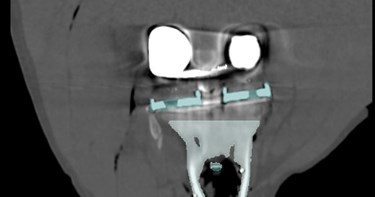Non-functioning joint replacements: advancements in diagnosis and personalized treatment of revision arthroplasty
The final goal of this project is two-folded: 1. To be able to tailor the knee revision arthroplasty approach to patient-specific factors and 2. To be able to monitor revision implants in 3D.
Revision (knee) surgery is expected to place a huge burden on healthcare systems in the future, because more people are aging and primary knee implants are being placed in younger patients.
Adequate fixation of a revision (knee)implant is crucial for its survival. However, this is challenging due to bone loss and poorer quality of the remaining bone. By preoperatively examining the anatomy, reason for revision, and the amount and quality of bone before surgery, a tailored treatment can be developed to ensure proper fixation. The use of 3D CT-based migration analysis can help determine whether the fixation is adequate.

